10 days
Daily Tour
Unlimited
English
About this tour
Nepal’s Annapurna region stands as a Himalayan paradise, beckoning avid trekkers to explore its diverse landscapes and towering peaks. Among the plethora of trekking options available, the Annapurna South Trek, Annapurna Sanctuary Trek, and Annapurna Basecamp Trek emerge as the crown jewels, each offering a unique adventure that seamlessly blends natural splendor with cultural richness.
Venturing off the beaten path, the Annapurna South Trek is a hidden gem for those seeking a less-trodden trail. The journey commences in Nayapul, leading trekkers through traditional Gurung and Magar villages like Ghandruk and Tadapani. The trail winds through lush rhododendron forests, revealing stunning views of Annapurna South.
As you ascend, the tranquil landscapes and close encounters with local culture make this trek an enriching experience.Also recognized as the Annapurna Base Camp Trek, the Annapurna Sanctuary Trek offers an immersive odyssey into the heart of the Annapurna massif. Beginning in Pokhara, the trail winds through picturesque villages, terraced fields, and dense forests before ascending to the sanctuary.
Trekkers are treated to ever-expanding vistas of Annapurna I, Machapuchare, and Hiunchuli. The base camp itself is a surreal amphitheater surrounded by towering peaks, providing a sense of accomplishment and awe. The Annapurna Base Camp Trek is the quintessential Himalayan adventure, weaving through a tapestry of landscapes and cultural encounters. Starting in Pokhara, the trek passes through charming villages like Chhomrong and Bamboo.
As the trail ascends, trekkers are rewarded with breathtaking views of Annapurna South, Machapuchare, and the entire Annapurna Massif. The base camp itself is a mesmerizing panorama, surrounded by towering peaks that seem to touch the sky.
Tips for an Unforgettable Annapurna South trek:
- Acclimatization is Key: Given the varying altitudes, ensure proper acclimatization to prevent altitude-related issues.
- Pack Strategically: Pack essential trekking gear, including layers for varying temperatures, a sturdy pair of boots, and a reliable backpack.
- Immerse in Local Culture: Interact with villagers, learn about their customs, and partake in the unique cultural experiences along the way.
- Capture the Magic: Don’t forget your camera – the landscapes, sunrises, and cultural moments are truly Instagram-worthy.
Whether you opt for the off-the-beaten-path allure of the Annapurna South Trek, the immersive experience of the Annapurna Sanctuary Trek, or the ultimate adventure to Annapurna Base Camp, each trek in the Annapurna region promises a journey of a lifetime. The blend of natural wonders and cultural richness creates an indelible mark on the hearts of those who dare to explore these Himalayan trails. As you traverse through quaint villages, lush forests, and rugged terrains, the allure of Annapurna unfolds, leaving you with memories that transcend the ordinary.
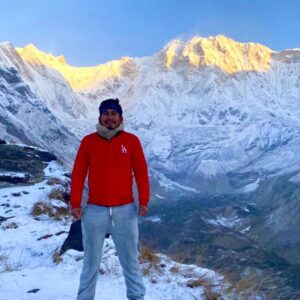
Welcome to our comprehensive guide to trekking to Annapurna Base Camp (ABC), a breathtaking adventure that promises stunning vistas, cultural immersion, and unforgettable experiences. Nestled in the heart of the Himalayas, the ABC trek is a pilgrimage for trekkers seeking to explore the majestic beauty of Nepal’s Annapurna region. In this detailed guide, we will take you through every aspect of the journey, from meticulous planning to cultural insights, health and safety considerations, and environmental conservation efforts.
- Planning and Preparation: Embarking on the ABC trek requires careful planning and preparation to ensure a smooth and enjoyable experience. Here’s what you need to consider:
- Timing: Choose the optimal time to trek, taking into account weather conditions, trail accessibility, and peak tourist seasons.
- Permits: Obtain the necessary permits, including the Annapurna Conservation Area Permit (ACAP) and Trekkers’ Information Management System (TIMS) card, well in advance.
- Fitness Training: Start a fitness regimen several months before your trek, focusing on cardiovascular endurance, strength training, and flexibility exercises to prepare your body for the physical challenges ahead.
- Essential Gear and Packing Tips: Packing the right gear is essential for comfort, safety, and convenience during the trek. Here’s a comprehensive list of essential items to pack:
- Clothing: Layering is key to staying warm and dry. Pack moisture-wicking base layers, insulating mid-layers, waterproof outerwear, and durable hiking socks.
- Footwear: Invest in high-quality hiking boots with ankle support and sturdy soles to provide stability and protection on varied terrain.
- Backpack: Choose a lightweight, ergonomic backpack with padded shoulder straps and a hip belt for even weight distribution and comfort.
- Other Essentials: Include items such as a sleeping bag suitable for cold temperatures, trekking poles for added stability, a first aid kit, sunscreen, and a headlamp with spare batteries.
- Cultural Insights and Local Communities: The ABC trek offers an opportunity to immerse yourself in the rich culture and traditions of the Himalayan region. Here’s what you can expect:
- Ethnic Diversity: Encounter diverse ethnic groups along the trek, including Gurungs, Magars, and Thakalis, each with its own unique customs, language, and way of life.
- Cultural Experiences: Stay in traditional teahouses, interact with local villagers, participate in cultural ceremonies and rituals, and learn about the ancient traditions passed down through generations.
- Respectful Interactions: Show respect for local customs and etiquette by dressing modestly, removing shoes before entering homes or temples, and greeting locals with a warm “Namaste” or “Tashi Delek.”
- Health and Safety: Maintaining good health and safety practices is crucial while trekking in the Himalayas. Here are some essential considerations:
- Altitude Acclimatization: Ascend gradually, allowing your body time to acclimatize to the altitude. Stay hydrated, avoid overexertion, and be vigilant for symptoms of altitude sickness, such as headaches, nausea, and dizziness.
- First Aid Preparedness: Carry a well-equipped first aid kit and know how to use it to treat common trekking injuries and ailments, such as blisters, cuts, sprains, and insect bites.
- Emergency Procedures: Familiarize yourself with evacuation routes, emergency contact numbers, and procedures in case of medical emergencies or natural disasters.
- Environmental Conservation: Preserving the fragile ecosystem of the Annapurna region is essential for future generations to enjoy. Here’s how you can minimize your environmental impact:
- Leave No Trace: Follow Leave No Trace principles by packing out all waste, staying on designated trails, and minimizing disturbance to wildlife and vegetation.
- Sustainable Practices: Support eco-friendly lodges and businesses, reduce plastic waste by carrying a refillable water bottle and reusable utensils, and minimize energy consumption by conserving water and electricity.
- Community Engagement: Engage with local communities, support sustainable tourism initiatives, and participate in conservation projects to contribute positively to the region’s environmental and socio-economic well-being.
As you prepare to embark on the adventure of a lifetime to Annapurna Base Camp, remember that the journey is not just about reaching the destination but also about the experiences, connections, and memories created along the way. By planning meticulously, respecting the culture and environment, prioritizing safety, and embracing the spirit of adventure, you’ll embark on a transformative journey that will stay with you long after you’ve returned home. So lace up your boots, breathe in the crisp mountain air, and get ready to embark on an unforgettable trekking experience amidst the awe-inspiring beauty of the Himalayas!
Highlights
- Mesmerizing sceneries of Mt. Annapurna 1 4130m, Annapurna II 7937m, Annapurna III, 7355m, Annapurna IV 7525m, Annapurna South 7219m, Machhapuchre 6999m, Dhaulagiri 8167m, Hiunchuli 6441m and Many Other Ice Peak Mountain
- Lush forests of Rhododendrons and Oaks
- Numerous rivers, suspension bridge and waterfall
- Rich local people Culture and Tradition in Annapurna Basecamp Villages
- Flora and Fauna of Annapurna Conservation Areas
- Natural Hot Spring in Jhinu Danda
- Traditional Sherpa Villages, Culture, Traditions and Hospitality
- Warm-Hearthed People of Annapurna Region
Included/Excluded
- Airport Pick up and Drop by Private Car upon arrival and departure
- Hotel Accomodation (Shared Room for Minimum 2 Pax and Single Room for Private Trip) in Kathmandu & Pokhara as per Itinerary
- All clean Standard Teahouses (Shared Room for Minimum 2 Pax and Single Room for Private Trip) in Chommrong, Himalaya/Daurali, Annapurna Basecamp and Jinu Dhanda as per Package booked
- Deluxe Tourist Bus Ticket from Kathmandu to Pokhara (both ways)
- Jeep from Pokhara to Nayapul & Mutque (both ways)
- Meals 3 x a day as per mentioned in Itinerary
- Company Duffle Bag to lend for trekking
- Sleeping Bag to lend for trekking
- Seasonal Fruits during trekking
- Professional Experienced Licensed English Speaking Guide
- Porter (1 Porter for 2 People with maximum luggage 25 kgs)
- Annapurna Conversation Trekking Permit & Government Tax
- Nepal Visa Online Application Service
- Emergency Evacuation Management / Service by Horse or Helicopter
- Farewell Dinner before Departure
- Official Trekking Certificate from our Company
- Flight ticket to Nepal & Travel Insurance
- Tourist Visa On Arrival Fee --> 15 Days = USD 30, 30 Days = USD 50
- Tips for Guide & Porter
- Extra Accommodation which is caused by your early arrival or late departure other than the trek date, and if you are back to Kathmandu early from the trek due to any problem or rescue (other personal reasons).
- Horse Rent / Helicopter Cost/Expenses for Emergency Evacuation or Personal Request
- Personal Expenses for trekking such as mountain gear or equipments, shopping, wifi/nepal simcard, phone/battery charge, hot water/shower, extra personal meals, drinks (mineral water), snacks, laundry etc
- Other Personal Expenses which are not included in the above facilities.
Itinerary

You arrive in Kathmandu today and our company staff will pick you up at Tribhuvan International Airport then drop you at Hotel. Our Staff will also give briefing you about the Annapurna Basecamp Trip and hand over duffle bag for your to pack your stuff for trekking. Payment on the balance trip cost also will be done today. If you come in the morning or early time today, we will have welcome dinner otherwise we will provide you with packed dinner in your room from the hotel you stay. Our Staff will also inform you what time you must wake up & prepared the following morning for driving to Ramechap. Overnight in Kathmandu
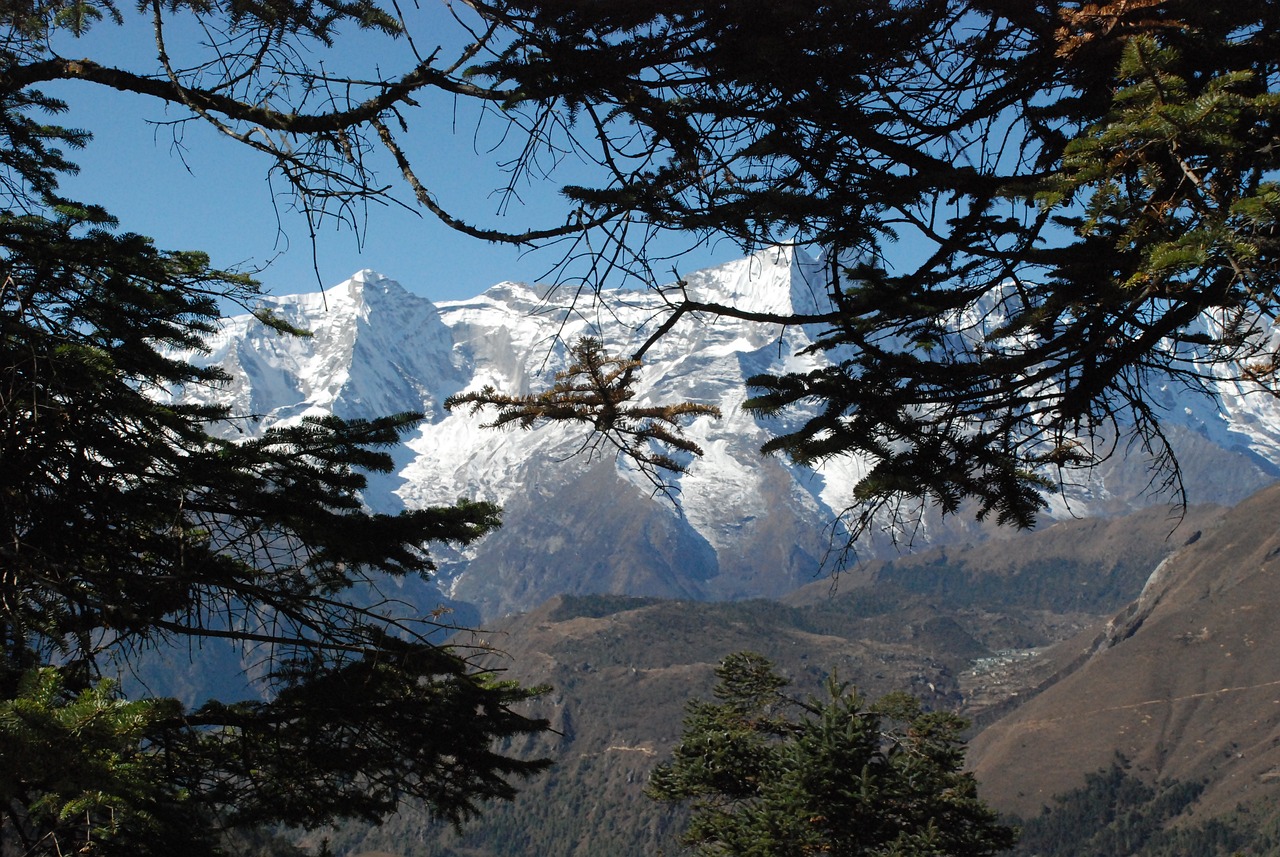
You need to wake up around 6 oclock in the morning, having quick breakfast at hotel (packed breakfast) then our Guide will come to hotel to pick you up and drive to Tourist Bus Terminal to leave Pokhara at 07.00 oclook. It takes around 6-7 hrs drive to reach Pokhara. If the road is nice and no traffic, you will reach Pokhara around 4pm and you will directly go to Hotel for rest. Overnight in Pokhara

After breakfast in the morning, you will drive to Nayapul for Checkpoint and Permit to Annapurna Conservation Area and continue drive to the starting point of Trek near Matque or Mutque. it takes around 3 hrs to reach here then you will directly start doing trek up and up to Jhinu and Chommrong, During this first trekking day, you will pass through 2 different long suspension bridges with beautiful landscape of village and local people around neighboorhood. Trekking to Matque to Chomrong will take 3-4 hrs. Overnight in Chommrong
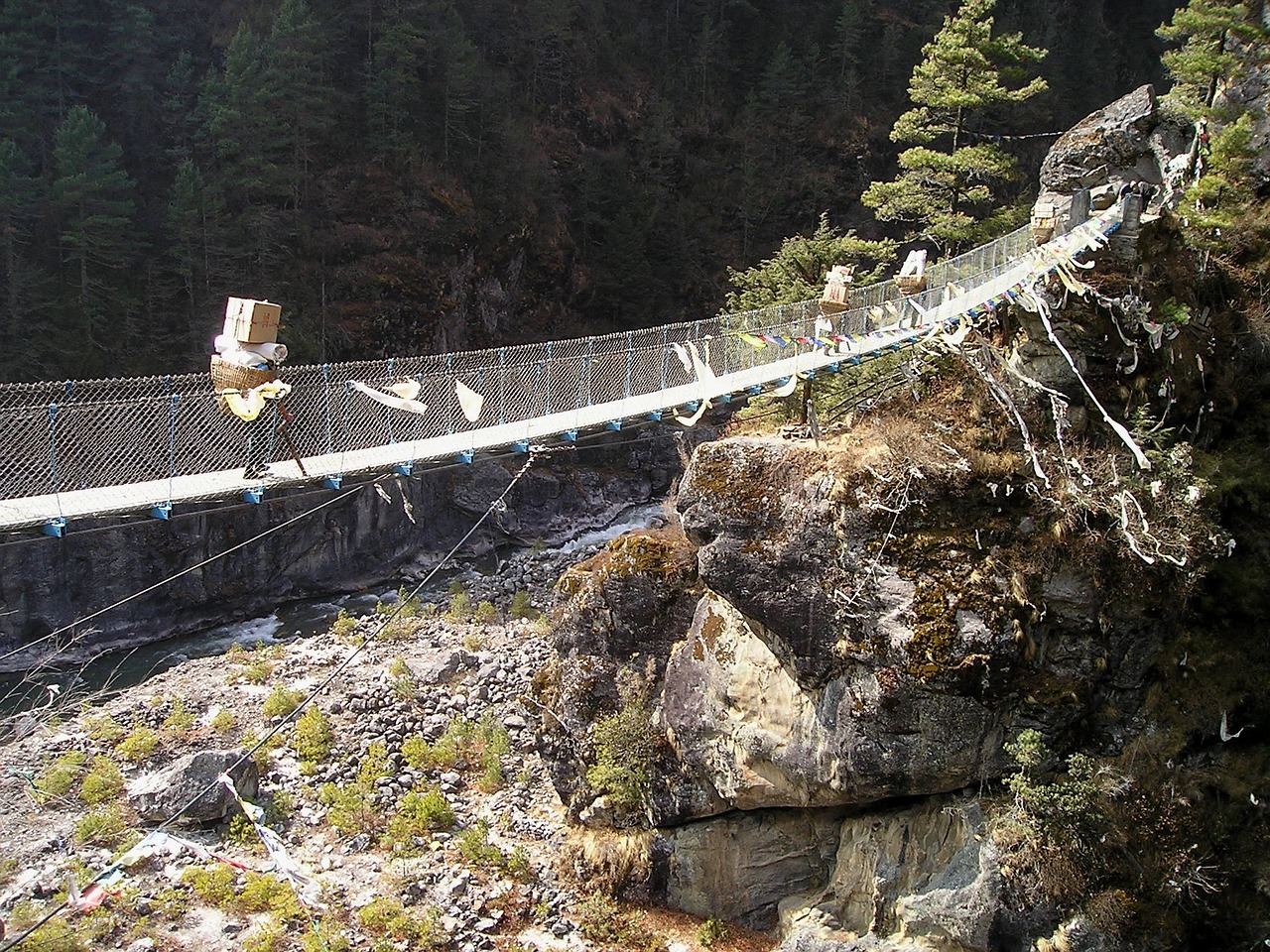
After breakfast you will start your trek at 7.30 from Chomrong to Lower Sinuwa and a steep ascent to Upper Sinuwa, a steep ascent, flat and Descent to Bamboo, Dovan and Deuralli/Himalaya. Treks to Annapurna Basecamp are arranged like stony steps with combination of steep ascending, flat and descending too. it will take around 6-7 hrs to reach Deuralli/Himalaya this day. Today trek will be quite tough and you need to maintain your pace nicely and have strong spirit to go throught all the treks. During the trek, you will see so many beautiful view of endemic plants, waterwalls, animals, villages and South Annapurna Mountain and Fish Tail. Overnight in Himalaya/Daurali

Trail ascends gradually and takes 5 to 6 hours to reach Annapurna base camp by foot. The trek you will take is from Deurali to Annapurna Base Camp route which is is one of the most favored by experienced trekkers who are looking for a more challenging and adventurous journey. The elevation of Annapurna base camp is 4130 meters above sea level. Trek pass throw Bagar 3300m and Machhapuchhre base camp 3700m then finally reach Mount Annapurna base camp Nepal. From the Deurali to Annapurna base camp trek distance trekkers can enjoy spectacular views of different peaks like Annapurna South, Machapuchare and Hiunchuli.
You will stop for Lunch in MBC before reaching ABC so you can enjoy the Himalayas peaks of Annapurna Himalayan Ranges like Ganga Purna, Annapurna III, Fishtail, Gandharva Chuli, Himchuli, Annapurna South. After reaching ABC you will be in the total bowl of Himalayas, Surrounded by Himalayas peaks. From ABC you see more peaks such as Tent Peak, Singu Chuli, Bhara Shikhar, and Annapurna I, which is the highest peak we can see from our Short ABC Trek. Annapurna Glaciers behind the tea house and Sunset views over Fishtail and the other Himalayas will make the Short ABC Trek more memorable and unforgettable. You are able to see the beautiful golden sunrise in Annapurna Basecamp if the weather is clear. Total Trek from Deuralli to Annapurna Basecamp is about 5-6 hrs. Overnight in Annapurna Basecamp
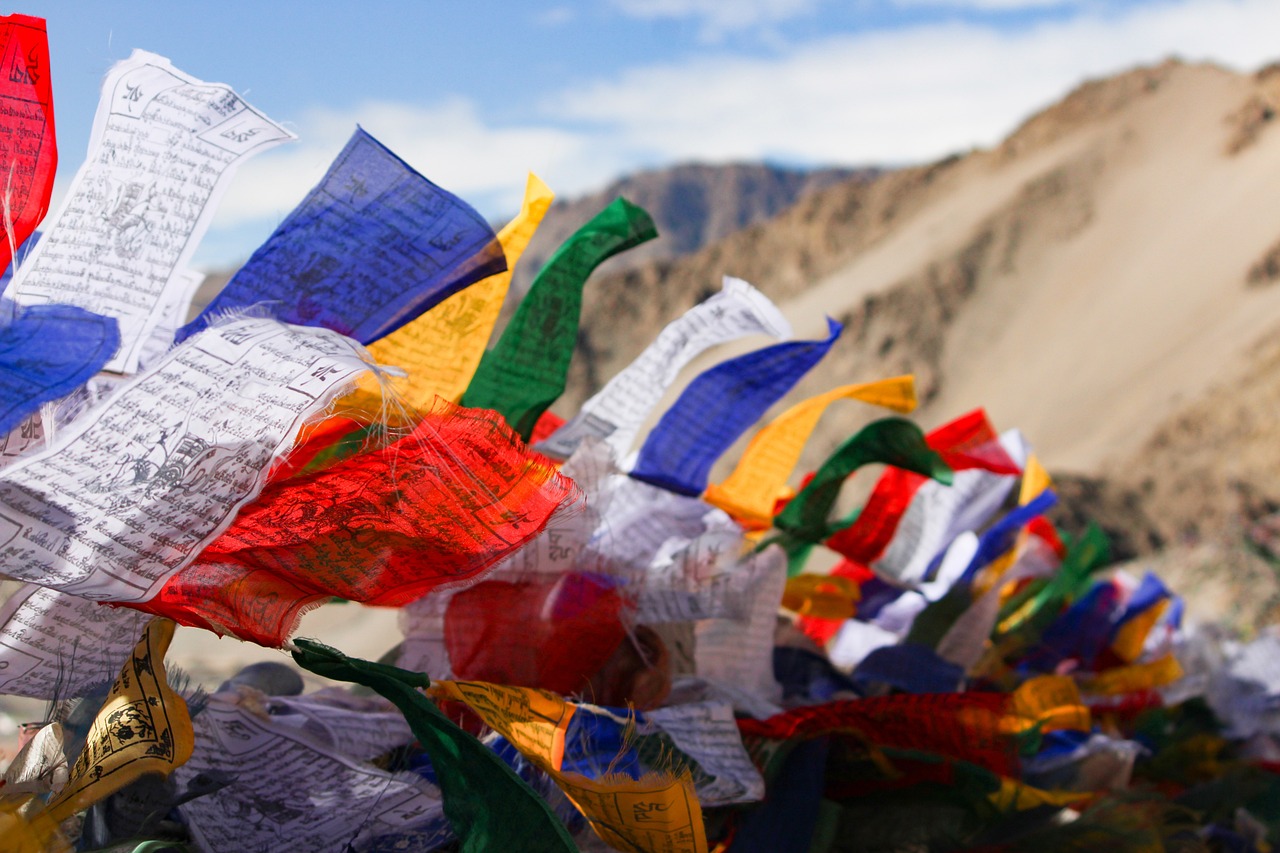
Today early morning around 5.30 you can walk out from teahouse and enjoy the Golden Sunrise around Annapurna Basecamp. You can see the most Stunning view of Annapurna Mountain, Mt Macchapuchre/Fish tail, Tent Peak, Annapurna South and Annapurna Glacier. Back to Teahouse around 6.30 and after breakfast and checked out from the tea house, you will trek down directly to bamboo. Annapurna Basecamp to Bamboo distance is around 16.7 km. This day will be the long day walk in Annapurna while returning from ABC Trekking. it takes 6-7 hrs to walk down and reach Bamboo. Overnight in Bamboo
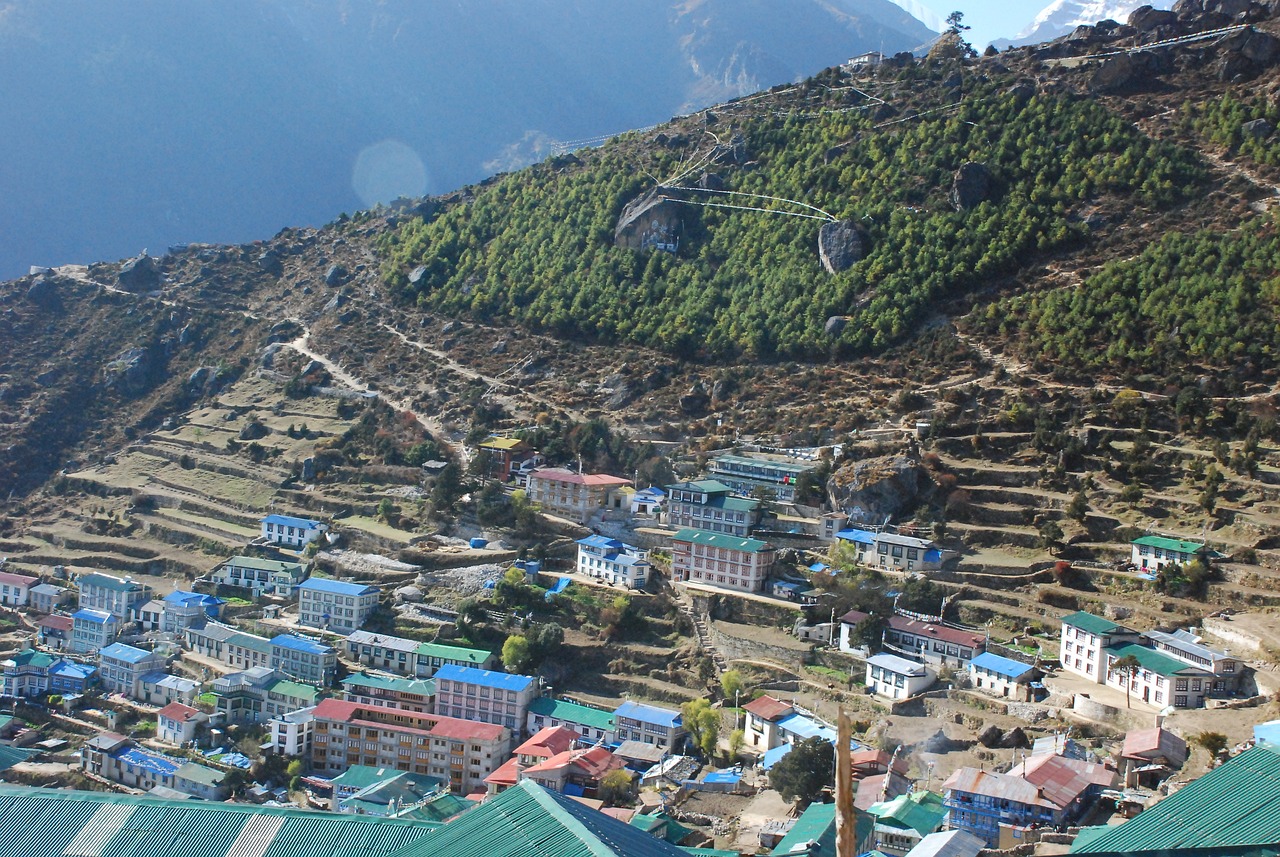
It takes 5-6 hrs to reach Jhinu Danda from Bambooo depending on your walkijg speed and fitness level. Path will be indeed quite tiring but once you have reached Jhinu Dana, You will forget all the tiredness while taking pleasure in natural view over there. If you have chance to try Natural Hot Spring in Jhinu Danda it will make you relaxed. Local People say Jhinu Danda “Tatopani” is a naturally hot spring. You can take a bath here. Overnight in Jhinu Danda (B/L/D)

After breakfast you will walk down for 30 minutes to Mutque area to find Jeep which will drive you to Nayapul and direct to Pokhara. Nayapul - Pokhara distance is about 45.5 km which takes around 2 till 3 hours drive. You will reach Pokhara day time and you will still have much time if you are not tired to do self sightsseeing around Hotel you stay or Phewa Lake side near Hotel. Overnight in Pokhara

After breaksfast at hotel our guide will accompany you to check out from hotel and directly go to Tourist Bus Terminal to drive back to Kathmandu. it takes 6-7 hrs to reach Kathmandu if there is no traffic jam. Once reaching kathmandu in the afternoon you will take rest for a while then in the evening we will invite you for farewell dinner and we distritibute Your Certificate of Achievement of having been successful reaching the Annapurna Basecamp. Overnight in Kathmandu.

Today is your last your day in Annapurna Basecamp Package. You have free time to rest till check out time comes at 12pm. Our Company Staff will pick you up at hotel and drop you at Tribhuvan International Airport. Trip ends. And Thank you for trust us as your trekking company. See you again in the coming trip
Durations
Languages
Frequently asked questions
The Annapurna Base Camp (ABC) trek is considered moderately difficult, offering a mix of challenges and rewards. Its difficulty level can vary based on several factors:
Terrain and Altitude:
The trek involves varied terrain, including ascents, descents, and some steep sections. Trails may range from well-defined paths to rocky, uneven terrain.
While the altitude gain isn't extreme compared to some other high-altitude treks, the ABC trek reaches altitudes over 4,000 meters (13,000 feet), which can pose challenges related to acclimatization.
Duration and Distance:
The typical duration for the ABC trek ranges from 7 to 12 days, covering around 115-130 kilometers (70-80 miles) round trip, depending on the specific route and itinerary.
Trekking hours per day can vary from 4 to 7 hours, with altitude gains contributing to the challenge.
Altitude and Acclimatization:
Altitude-related challenges such as altitude sickness can affect trekkers. Adequate acclimatization and a gradual ascent are crucial to mitigate these risks.
Acclimatization days built into the itinerary allow the body to adjust to higher altitudes and reduce the risk of altitude-related illnesses.
Weather and Conditions:
Weather conditions can fluctuate, especially in higher elevations. The trek can experience rain, snow, and cold temperatures, particularly during certain seasons.
Proper gear and clothing are essential to handle varying weather conditions.
Difficulty Variations:
The difficulty can vary based on the specific route taken, the pace of trekking, individual fitness levels, and prior trekking experience.
Some sections, like the steep ascent to Machhapuchhre Base Camp (MBC), can be more challenging.
Overall Assessment:
While the trek is achievable for most reasonably fit individuals with preparation and the guidance of experienced guides, it does require physical fitness, mental preparedness, and a respect for the challenges of high-altitude trekking.
Trekking experience, endurance training, and prior exposure to mountainous terrain can significantly contribute to a smoother and more enjoyable trek.
Ultimately, while the Annapurna Base Camp trek presents challenges, the stunning vistas, cultural encounters, and the sense of accomplishment make it a rewarding and memorable journey for many adventurers. Engaging in adequate physical preparation, acclimatization, and being mindful of altitude-related risks can enhance the overall experience. Consulting experienced guides or tour operators can provide valuable insights and support for a successful trek.
The duration to hike to Annapurna Base Camp (ABC) can vary based on several factors, including the specific route taken, trekking pace, acclimatization schedule, and individual preferences. On average, the trek to Annapurna Base Camp typically takes around 7 to 12 days for a round trip from the starting point.
Common Itineraries:
Shorter Duration (7-9 days):
Some trekkers opt for shorter itineraries that cover the essential route to ABC. This might involve a quicker ascent and descent with fewer acclimatization days.
Moderate Duration (9-11 days):
A more common duration includes a moderate-paced trek with adequate acclimatization days built into the itinerary. This allows for a gradual ascent and reduces the risk of altitude-related issues.
Extended Duration (11-12+ days):
Longer itineraries offer a more relaxed pace, additional acclimatization days, and opportunities to explore side trails or villages along the route, enhancing the overall experience.
Sample Itinerary Overview:
Day 1-2: Begin from Nayapul or Phedi, trek through picturesque villages like Ghandruk or Chhomrong.
Day 3-4: Ascend toward Machhapuchhre Base Camp (MBC) and then Annapurna Base Camp (ABC).
Day 5-6: Spend time at ABC, taking in the stunning mountain views and exploring the surrounding area.
Day 7-8: Descend along the same route or an alternative path back to the starting point.
Factors Affecting Duration:
Acclimatization Days: It's advisable to include acclimatization days in the itinerary to allow for gradual altitude gain, reducing the risk of altitude sickness.
Trekking Pace: Individual trekking speeds and preferences for breaks, rest days, or additional exploration time can influence the overall duration.
Weather Conditions: Unforeseen weather changes or trail conditions can occasionally impact the schedule.
Trek Customization:
Trekking agencies and experienced guides can tailor itineraries based on individual preferences, accommodating different durations, side trips, or rest days to suit the trekker's needs.
While the average duration is around 7-12 days, some trekkers might opt for shorter or longer routes depending on their time constraints and preferences. It's crucial to choose an itinerary that allows for proper acclimatization and an enjoyable experience amidst the stunning landscapes of the Annapurna region.
The difficulty of trekking to Annapurna Base Camp (ABC) versus reaching Everest Base Camp (EBC) involves various factors and perspectives. Here's a comparison:
Annapurna Base Camp (ABC):
Difficulty Level: Generally considered moderately difficult. The altitude at ABC is around 4,130 meters (13,550 feet), which is lower compared to Everest Base Camp.
Altitude Challenges: While altitude sickness can still occur, the altitude gain is less extreme compared to EBC. However, proper acclimatization is crucial.
Trek Duration: The trek to ABC usually takes around 7 to 12 days for a round trip, depending on the specific itinerary and pace.
Everest Base Camp (EBC):
Difficulty Level: Often considered more challenging due to higher altitudes. The trek to EBC reaches an altitude of about 5,364 meters (17,598 feet).
Altitude Challenges: The higher altitude increases the risk of altitude-related issues, and the trek requires more attention to acclimatization.
Trek Duration: The standard trek to EBC usually takes around 12 to 14 days for a round trip, allowing for gradual altitude gain and acclimatization.
Factors to Consider:
Altitude: EBC reaches a higher altitude than ABC, making altitude-related challenges more significant.
Trek Duration: The duration for the EBC trek is usually longer than ABC, providing more time for acclimatization.
Terrain and Weather: Both treks encompass varied terrain and unpredictable weather, contributing to their respective challenges.
Individual Perspectives:
Subjective Experience: Trek difficulty can be subjective and depends on individual factors such as physical fitness, prior trekking experience, altitude tolerance, and overall preparation.
Personal Challenges: Some trekkers might find the higher altitude of Everest more challenging, while others might find the duration or terrain of Annapurna more demanding.
Conclusion:
In terms of altitude, Everest Base Camp presents a higher elevation, which generally poses greater altitude challenges. However, both treks have their unique difficulties and rewards. Annapurna Base Camp may be perceived as moderately difficult, while Everest Base Camp tends to be viewed as more challenging due to the higher altitude.
Ultimately, the "difficulty" of each trek can vary significantly based on individual perspectives, physical condition, acclimatization, and personal experiences. Both treks offer breathtaking scenery and unique adventures, each with its own set of challenges and charms.
Climbing Annapurna, specifically reaching the summit of Annapurna I (8,091 meters / 26,545 feet), is an extremely challenging and technical endeavor even for experienced mountaineers. Annapurna I is one of the world's most dangerous peaks, and its summit success rate is notably lower compared to other 8,000-meter peaks.
For beginners or those with limited mountaineering experience, attempting to climb Annapurna I would be highly discouraged and not advisable due to:
Technical Difficulty:
Annapurna I requires advanced mountaineering skills, including ice and rock climbing, crevasse navigation, and experience with high-altitude conditions.
Technical expertise in using specialized equipment like ice axes, crampons, harnesses, and ropes is essential.
High Risk:
Annapurna I is notorious for its avalanche-prone slopes, severe weather conditions, and challenging terrain, contributing to its high fatality rate among climbers.
The mountain poses significant risks of altitude sickness, avalanches, falls, and exposure to extreme cold.
Prior Experience Required:
Climbers attempting Annapurna I usually have extensive high-altitude climbing experience, including successful ascents of other challenging peaks.
Proper acclimatization, physical conditioning, and knowledge of mountaineering techniques are crucial prerequisites.
Alternative Options:
For beginners or those new to mountaineering, there are other trekking routes in the Annapurna region that offer stunning views and unique experiences without the technical demands of climbing Annapurna I. The trek to Annapurna Base Camp (ABC) or other lower-altitude treks in the region are more suitable for beginners and offer breathtaking vistas without the complexities of high-altitude mountaineering.
Safety Consideration:
Safety should always be a priority in mountaineering. Novices should start with less challenging treks or climbs, gain experience gradually, and consider professional guidance or training courses to build the necessary skills before attempting more technical and demanding ascents like Annapurna I.
In summary, climbing Annapurna I is not recommended for beginners due to its extreme difficulty, technical challenges, and high risks associated with the ascent.
Trekking to Annapurna Base Camp (ABC) requires a moderate to good level of fitness. While you don't need to be an athlete, being physically prepared is crucial for an enjoyable and safe trek. Here's an overview of the fitness level recommended:
Endurance and Cardiovascular Fitness:
Walking Stamina: The trek involves walking for several hours each day, often on uneven terrain with ascents and descents. Good walking endurance is essential.
Cardio Workouts: Engaging in cardio exercises like brisk walking, jogging, cycling, or stair climbing helps improve cardiovascular endurance.
Strength and Lower Body Conditioning:
Leg Strength: Building strength in the legs, especially quadriceps, calves, and glutes, helps in tackling uphill sections and descending on uneven trails.
Strength Training: Incorporating exercises like squats, lunges, calf raises, and leg presses strengthens lower body muscles.
Core Strength and Stability:
Core Exercises: A strong core improves stability and balance on the trail. Incorporate exercises like planks, crunches, and yoga poses that engage core muscles.
Balance Training: Practicing balance exercises helps navigate uneven terrain and enhances stability.
Flexibility and Mobility:
Stretching: Flexibility is crucial to prevent muscle stiffness and reduce the risk of injury. Include stretching routines for the entire body, focusing on legs, hips, and back.
Yoga or Pilates: These practices can improve flexibility, mobility, and overall body strength.
Altitude and Acclimatization:
Adequate Acclimatization: While not directly related to fitness, preparing for altitude is essential. Gradual ascent and acclimatization days help the body adjust to higher altitudes.
Mental Preparedness:
Mental Resilience: Trekking involves perseverance and mental resilience. Being mentally prepared for the challenges and embracing the experience positively is as important as physical fitness.
Training Routine:
Regular Exercise: Engage in a regular exercise routine, including cardio workouts, strength training, flexibility exercises, and hiking practice.
Incremental Training: Gradually increase the intensity and duration of workouts to build endurance and stamina over time.
Practice Hiking: If possible, practice hikes with similar conditions (e.g., uphill trails) to simulate trekking conditions and build endurance.
Consultation and Preparation:
Consult a healthcare professional or fitness trainer before starting any new exercise routine, especially if you have any health concerns or medical conditions.
Proper preparation and fitness training significantly enhance your trekking experience and reduce the risk of exhaustion or injury during the Annapurna Base Camp trek.
A moderate level of fitness, combined with proper preparation, can make the trek to Annapurna Base Camp more enjoyable and manageable. Tailoring a fitness routine that includes cardiovascular exercise, strength training, flexibility, and hiking practice will significantly contribute to your readiness for the trek.
The best months for trekking to Annapurna Base Camp (ABC) are generally considered to be in the spring and autumn seasons, offering favorable weather, clear skies, and stunning views. The two primary recommended periods for the ABC trek are:
Spring Season (March to May):
Weather: Spring brings warmer temperatures, blooming rhododendrons, and lush landscapes. Days are usually sunny and clear.
Views: Clear visibility offers excellent panoramic views of the mountains and surrounding landscapes.
Flora and Fauna: The trails come alive with colorful flowers and vibrant vegetation, enhancing the trekking experience.
Moderate Temperatures: Mild daytime temperatures make trekking comfortable.
Autumn Season (September to November):
Weather: Autumn is characterized by clear skies, stable weather conditions, and mild temperatures. It's considered the peak trekking season.
Visibility: Clear views of the mountains, including the Annapurna range, Machhapuchhre, and surrounding peaks.
Festive Atmosphere: The autumn months often coincide with Nepali festivals like Dashain and Tihar, offering cultural insights during the trek.
Moderate Weather: Comfortable temperatures during the day and cooler nights make trekking pleasant.
Factors to Consider:
Crowds: Both seasons can be relatively busy with trekkers, especially during peak times. Autumn tends to have more trekkers due to its popularity.
Weather Variability: While spring and autumn are generally favorable, weather conditions can vary. Be prepared for occasional rain or unexpected weather changes.
Considerations for Other Months:
Winter (December to February): Winter months offer quieter trails with fewer trekkers. However, colder temperatures and higher chances of snow make trekking more challenging, especially at higher elevations.
Monsoon (June to August): Monsoon season brings heavy rainfall and cloudy conditions, making trekking trails slippery and potentially hazardous. Trails can be less recommended due to the risk of landslides and reduced visibility.
Personal Preferences:
Consider your personal preferences regarding temperature, crowd levels, and your tolerance for weather conditions when choosing the best time for your trek.
Conclusion:
Both spring and autumn are excellent times for the Annapurna Base Camp trek, offering stunning vistas, favorable weather, and a memorable trekking experience. Each season has its advantages, so choosing the best time depends on your preferences and the experience you seek during your trek.
At Annapurna Base Camp (ABC), trekkers typically stay in tea houses or lodges, which are basic accommodations available along the trekking route. These teahouses provide essential amenities for trekkers:
Tea Houses/Lodges:
Basic Accommodations: Tea houses offer simple rooms with basic bedding (usually twin beds or dormitory-style rooms) and blankets.
Common Areas: Some tea houses have communal dining areas where trekkers can relax, socialize, and enjoy meals.
Shared Bathrooms: Facilities usually include shared bathrooms with squat toilets or western-style toilets. Hot showers may be available, but they might be limited or provided for an extra cost.
Heating: Many tea houses offer a communal heating area fueled by firewood or a central heating system in common spaces.
Accommodation Arrangements:
Room Availability: During peak trekking seasons, especially in spring and autumn, it's advisable to arrive at tea houses early to secure a room.
Trekking Agencies and Guides: If you're trekking with an agency or guide, they often arrange accommodations in advance.
Meals and Services:
Meals: Tea houses provide meals for trekkers, typically offering a variety of local and international dishes, including dal bhat (traditional Nepali meal), pasta, noodles, and soups.
Packed Lunches: Some tea houses can arrange packed lunches for trekkers heading out early in the morning for their trek.
Drinking Water: Bottled water or boiled water for refilling water bottles is usually available for purchase.
Considerations:
Limited Amenities: Tea houses offer basic facilities; luxury amenities are not standard.
Altitude and Accommodations: Accommodation availability and facilities might vary as you ascend to higher altitudes. At higher elevations, the number of tea houses might be limited.
Preparation Tips:
Sleeping Bag: Carrying a sleeping bag is advisable, especially during colder months or if the tea house's bedding isn't sufficient.
Toiletries and Essentials: Bring toiletries, toilet paper, and other personal essentials as they might not be provided or available in remote areas.
Overall Experience:
Staying in tea houses along the Annapurna Base Camp trek provides a rustic but authentic experience, allowing trekkers to connect with fellow adventurers, experience local hospitality, and enjoy the stunning surroundings of the Himalayas.
Annapurna Base Camp (ABC) is renowned and celebrated for several reasons, making it a popular trekking destination among adventurers and nature enthusiasts:
Spectacular Mountain Views:
Panoramic Scenery: ABC offers breathtaking views of the Annapurna mountain range, including Annapurna I (8,091 meters / 26,545 feet), the tenth highest peak in the world.
Machhapuchhre (Fishtail): The iconic Machhapuchhre (6,993 meters / 22,943 feet) stands prominently, creating a dramatic backdrop along the trekking route.
Varied Landscapes and Flora:
Diverse Terrain: The trek traverses diverse landscapes, from lush forests of rhododendrons and bamboo to high-altitude alpine meadows.
Floral Splendor: The region is rich in biodiversity, showcasing a vibrant array of flora, including colorful rhododendron forests in full bloom during spring.
Cultural Encounters:
Local Communities: The trek passes through traditional villages inhabited by Gurung and Magar communities, allowing trekkers to experience local culture, traditions, and warm hospitality.
Tea Houses: Accommodations in tea houses provide an opportunity for cultural exchanges and interactions with locals.
Trekking Experience:
Accessibility: The trek to ABC is relatively accessible, offering a challenging yet achievable journey for a wide range of trekkers, from beginners to experienced adventurers.
Moderate Difficulty: The trek presents moderate difficulty, providing a fulfilling experience without the technical challenges of high-altitude mountaineering.
Spiritual and Natural Serenity:
Natural Hot Springs: The trek passes by Jhinu Danda, known for its natural hot springs, offering a rejuvenating break for trekkers.
Peaceful Setting: ABC itself, nestled amidst the towering peaks, provides a serene and peaceful atmosphere, making it a destination for reflection and awe.
Overall Appeal:
Scenic Highlights: The trek encompasses a blend of natural beauty, cultural immersion, and mountain vistas, attracting trekkers seeking a memorable Himalayan experience.
Rewarding Achievement: Reaching Annapurna Base Camp serves as a personal achievement, rewarding trekkers with stunning views and a sense of accomplishment.
The combination of stunning mountain panoramas, cultural experiences, varied landscapes, and accessibility contribute to the enduring fame and appeal of Annapurna Base Camp as a sought-after trekking destination in the Himalayas.
Deciding between the Annapurna Circuit and Annapurna Base Camp (ABC) often depends on personal preferences, trekking experience, and the kind of experience you seek. Here's a comparison to help you choose:
Annapurna Circuit:
Highlights:
Length and Diversity: The Annapurna Circuit is a longer trek, typically spanning about 12 to 21 days, covering approximately 160-230 kilometers (100-145 miles).
Varied Landscapes: The circuit offers diverse landscapes, including lush forests, terraced fields, arid landscapes, high mountain passes like Thorong La (5,416 meters / 17,769 feet), and traditional villages.
Cultural Immersion: Trekkers encounter diverse ethnic communities, such as Gurungs, Thakalis, and Manangis, experiencing their cultures, traditions, and lifestyles.
Considerations:
Longer Duration: The Annapurna Circuit requires a longer time commitment compared to ABC.
Altitude Challenges: Crossing high passes involves greater altitude gain and acclimatization considerations.
Annapurna Base Camp:
Highlights:
Stunning Mountain Views: ABC offers spectacular views of the Annapurna range, Machhapuchhre, and surrounding peaks.
Moderate Duration: The trek to ABC typically spans about 7 to 12 days, covering approximately 115-130 kilometers (70-80 miles).
Cultural Encounters: While less diverse than the circuit, trekkers still encounter local communities and experience their culture along the route.
Considerations:
Focused Mountain Views: ABC primarily focuses on mountain panoramas, offering a more concentrated experience compared to the varied landscapes of the circuit.
Moderate Difficulty: It's generally considered moderately difficult, making it more accessible for a wider range of trekkers compared to the circuit.
Choosing Between Them:
Experience Preference: If you prefer a longer trek with diverse landscapes and cultural immersion, the Annapurna Circuit might be more appealing.
Mountain-Focused Experience: For a trek concentrated on stunning mountain vistas and a slightly shorter duration, ABC could be a better choice.
Personal Factors:
Trekking Experience: Consider your level of trekking experience and physical readiness for a longer or more demanding trek.
Time Constraints: Assess the time you have available for the trek as the Annapurna Circuit requires a longer duration compared to ABC.
Both treks offer unique experiences, stunning vistas, and cultural encounters. Your choice ultimately depends on the experience you seek, the duration you're willing to commit, and your trekking preferences.
There isn't a specific age limit set for trekking to Annapurna Base Camp or Annapurna Circuit. However, the trek's challenges, including the duration, altitude, and terrain, make it more suitable for individuals with a certain level of physical fitness and endurance.
Considerations for Age:
Physical Fitness: Trekking to Annapurna requires a moderate level of fitness, especially for continuous walking, ascending, and descending on varied terrain.
Altitude Challenges: While Annapurna Base Camp doesn't reach extreme altitudes, it's essential to consider the potential effects of altitude on individuals, particularly older adults.
Trek Duration: The trek can last from 7 to 21 days, depending on the route chosen, which might be demanding for some individuals, especially older trekkers.
Guidelines for Age:
Individual Assessment: There's no strict age limit, but it's advisable for older adults to assess their fitness levels, consult healthcare professionals, and consider their comfort with extended physical activity before embarking on the trek.
Previous Trekking Experience: Prior trekking experience can be beneficial in understanding one's capabilities and readiness for a trek like Annapurna.
Personal Readiness:
Physical Preparation: Engaging in regular exercise, endurance training, and hiking practice can improve fitness levels and readiness for the trek, regardless of age.
Consultation: Consulting with a doctor or healthcare professional can provide personalized guidance based on an individual's health and physical condition.
Trekking Support:
Guided Treks: Joining a guided trek with experienced guides and porters can provide additional support and assistance, ensuring safety and comfort, especially for older trekkers.
Conclusion:
While there's no strict age limit, older individuals should assess their fitness, health conditions, and comfort with the challenges posed by trekking to Annapurna. With proper preparation, guidance, and consideration of individual capabilities, many older adults have successfully completed the trek. However, personal readiness and physical fitness play crucial roles in determining one's ability to undertake such a trek.
In terms of fatality rates, historically, Annapurna I has had a higher fatality rate among climbers compared to Mount Everest. Annapurna I, the 10th highest peak in the world, has earned a reputation for being one of the deadliest mountains to climb due to its technical difficulty, frequent avalanches, and challenging conditions.
Annapurna I:
- High Fatality Rate: Annapurna I has a higher fatality rate among climbers attempting to reach its summit. The challenges include treacherous avalanche-prone slopes, severe weather, and technical difficulties.
- Dangerous Conditions: The mountain is known for its steep and icy slopes, which pose significant risks during ascents and descents.
Mount Everest:
- Higher Success Rate, Lower Fatality Rate: While Mount Everest is the tallest peak and attracts a larger number of climbers, it generally has a higher success rate in summit attempts compared to Annapurna I.
- Challenges: Everest presents its own set of challenges, including extreme altitude, harsh weather, and the Khumbu Icefall, but it is often considered more manageable by experienced climbers.
Factors to Consider:
- Technical Difficulty: Annapurna I is considered technically more challenging than Everest, requiring advanced mountaineering skills.
- Altitude Challenges: While both peaks are high-altitude mountains, Everest's death zone begins at a higher altitude than Annapurna I, posing severe challenges related to altitude sickness and oxygen levels.
Conclusion:
While both Annapurna I and Everest present significant risks and challenges, historically, Annapurna I has had a higher fatality rate among climbers attempting to reach its summit. However, the danger associated with mountaineering on either peak should not be underestimated, and both require extensive preparation, experience, and respect for the inherent risks involved in high-altitude mountaineering.
Annapurna I, the 10th highest peak in the world, is known for its high fatality rate among climbers attempting to summit the peak. The mountain's challenging terrain, severe weather conditions, and technical difficulties contribute to its reputation as one of the deadliest peaks to climb.
Climbing Death Rate:
- The exact climbing death rate for Annapurna I can vary from year to year and over time due to different climbing seasons, varying climbing conditions, and the number of attempts made by climbers.
- Annapurna I has historically had one of the highest fatality rates among the 8,000-meter peaks. The fatality rate for climbers attempting to summit Annapurna I has been estimated to be around 32%, making it one of the deadliest peaks in terms of summit success to fatality ratio.
- These statistics fluctuate annually and are affected by numerous factors, including avalanches, falls, altitude sickness, and adverse weather conditions.
Challenges and Risks:
- The mountain's technical difficulties, steep and avalanche-prone slopes, coupled with unpredictable weather patterns, contribute to the inherent risks faced by climbers.
- The region is known for harsh weather conditions, frequent avalanches, and difficult climbing routes, which significantly increase the danger for mountaineers attempting to ascend Annapurna I.
Conclusion:
While Annapurna I offers a formidable challenge to climbers, the fatality rate among those attempting to summit remains high compared to other peaks. Climbing Annapurna I requires experienced mountaineers with advanced technical skills, a strong understanding of high-altitude climbing, and thorough preparation to mitigate the inherent risks associated with attempting such a challenging ascent.
Yes, it's highly advisable to bring a sleeping bag when trekking to Annapurna Base Camp (ABC). While tea houses and lodges along the trekking route provide basic accommodations, they often offer only simple bedding such as blankets and sheets. Carrying your sleeping bag ensures comfort, warmth, and hygiene during your stay at these accommodations.
Reasons to Bring a Sleeping Bag:
- Comfort: Having your sleeping bag ensures a more comfortable and familiar sleeping environment.
- Warmth: Higher elevations can get cold, especially during the night. A good-quality sleeping bag provides insulation and warmth.
- Hygiene: While tea houses provide bedding, using your sleeping bag adds an extra layer of cleanliness and personal comfort.
Sleeping Bag Recommendations:
- Temperature Rating: Choose a sleeping bag with a temperature rating suitable for the expected conditions during your trek. Consider the likely nighttime temperatures along the route.
- Weight and Size: Opt for a lightweight and compact sleeping bag that fits easily into your backpack without adding excessive weight.
- Quality and Insulation: Look for a sleeping bag with adequate insulation and quality materials to provide warmth without being too bulky.
Renting or Purchasing:
- Renting: If you prefer not to carry a sleeping bag, some trekking agencies in Kathmandu or Pokhara offer sleeping bag rental services for the duration of the trek.
- Purchasing: Buying or bringing your sleeping bag ensures familiarity and comfort. There are various options available for purchase, catering to different temperature ratings and budgets.
Additional Tips:
- Sleeping Bag Liner: Some trekkers also opt to bring a sleeping bag liner for added cleanliness and to enhance warmth within the sleeping bag.
- Down vs. Synthetic: Down sleeping bags offer excellent warmth-to-weight ratios but might lose insulation when wet. Synthetic sleeping bags maintain insulation when damp but can be bulkier.
Conclusion:
While tea houses and lodges provide basic bedding, having your sleeping bag ensures comfort, warmth, and hygiene during your trek to Annapurna Base Camp. Choose a sleeping bag suitable for the expected temperatures, considering insulation, weight, and personal preferences to make your trekking experience more comfortable.
Does it rain in Annapurna Base Camp?
The Annapurna Base Camp (ABC) region experiences varied weather patterns, and rainfall is a possibility, particularly during certain times of the year. Here's an overview of the rainfall patterns in the ABC area:
Rainfall Patterns:
- Monsoon Season (June to August): This period coincides with the monsoon season in Nepal, bringing heavy rainfall to the region. During these months, there's a higher likelihood of rain and cloudy conditions throughout the Annapurna region, including the ABC trekking route.
- Spring and Autumn: While spring (March to May) and autumn (September to November) are generally drier months in the Annapurna region, occasional showers or rain can still occur, although they are less frequent compared to the monsoon season.
- Winter Months (December to February): Rainfall during winter is less common, and the region might experience occasional snowfall or freezing temperatures at higher elevations instead of rain.
Impact on Trekking:
- Monsoon Season: Heavy rainfall during the monsoon season can make trekking trails slippery, muddy, and potentially hazardous. Landslides and swollen rivers might also affect trail conditions, making certain sections challenging to navigate.
- Other Seasons: In spring and autumn, while rain is less frequent, trekkers should still be prepared for occasional showers. Carrying appropriate rain gear and waterproof clothing is advisable.
Preparation Tips:
- Rain Gear: Regardless of the season, it's essential to carry waterproof gear, including a rain jacket, rain pants, and covers for backpacks and equipment.
- Footwear: Waterproof or water-resistant hiking boots help keep your feet dry and provide better traction on wet surfaces.
- Weather Forecast: Check weather forecasts before your trek to anticipate potential rain and plan accordingly.
Conclusion:
While rainfall at Annapurna Base Camp might be more common during the monsoon season, occasional showers can occur in other seasons too. Trekkers should be prepared for changing weather conditions and ensure they have appropriate gear to stay dry and comfortable while trekking in the ABC region.
Nepal offers several base camp treks with varying levels of difficulty. Among the popular base camp treks known for being relatively easier in terms of accessibility and trail difficulty are:
Ghorepani Poon Hill Trek:
- Duration: Typically 4 to 7 days.
- Difficulty: Considered one of the easiest treks in Nepal.
- Highlights: Stunning sunrise views from Poon Hill, diverse landscapes, and cultural encounters with Gurung and Magar communities.
- Altitude: Maximum altitude is around 3,210 meters (10,531 feet), making it more manageable for trekkers concerned about altitude sickness.
- Trail Conditions: Well-marked trails with tea houses along the way, offering comfortable accommodations.
Langtang Valley Trek:
- Duration: Generally 7 to 10 days.
- Difficulty: Moderately easy with gradual ascents.
- Highlights: Beautiful landscapes, rhododendron forests, traditional Tamang villages, and stunning views of Langtang Lirung.
- Altitude: Maximum altitude reaches around 3,870 meters (12,697 feet), making it accessible for trekkers without extreme altitude challenges.
- Trail Conditions: Generally well-defined trails with tea houses for accommodations.
Mardi Himal Trek:
- Duration: Around 5 to 7 days.
- Difficulty: Moderately easy with gradual ascents.
- Highlights: Views of Annapurna, Machhapuchhre (Fishtail), and Mardi Himal, less crowded trails compared to other treks.
- Altitude: Maximum altitude reaches around 4,500 meters (14,764 feet), offering a moderate altitude experience.
- Trail Conditions: Trails might be less developed compared to more popular routes, but still manageable with tea house accommodations available.
Considerations:
- While these treks are considered easier in terms of difficulty, individual experiences can vary based on personal fitness levels, acclimatization, and trekking conditions.
- These treks offer stunning views, cultural encounters, and moderate altitudes, making them suitable for trekkers looking for a more manageable trekking experience in Nepal.
Conclusion:
The Ghorepani Poon Hill Trek, Langtang Valley Trek, and Mardi Himal Trek are among the easier base camp treks in Nepal, offering beautiful landscapes, cultural experiences, and moderate altitude gains. They are suitable options for trekkers seeking a more accessible and less strenuous trekking experience in Nepal.

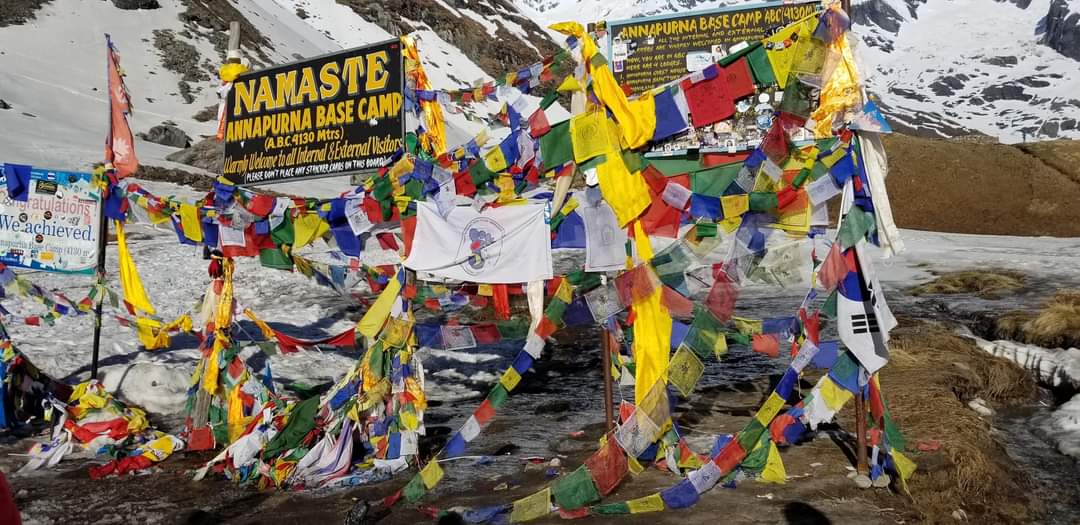



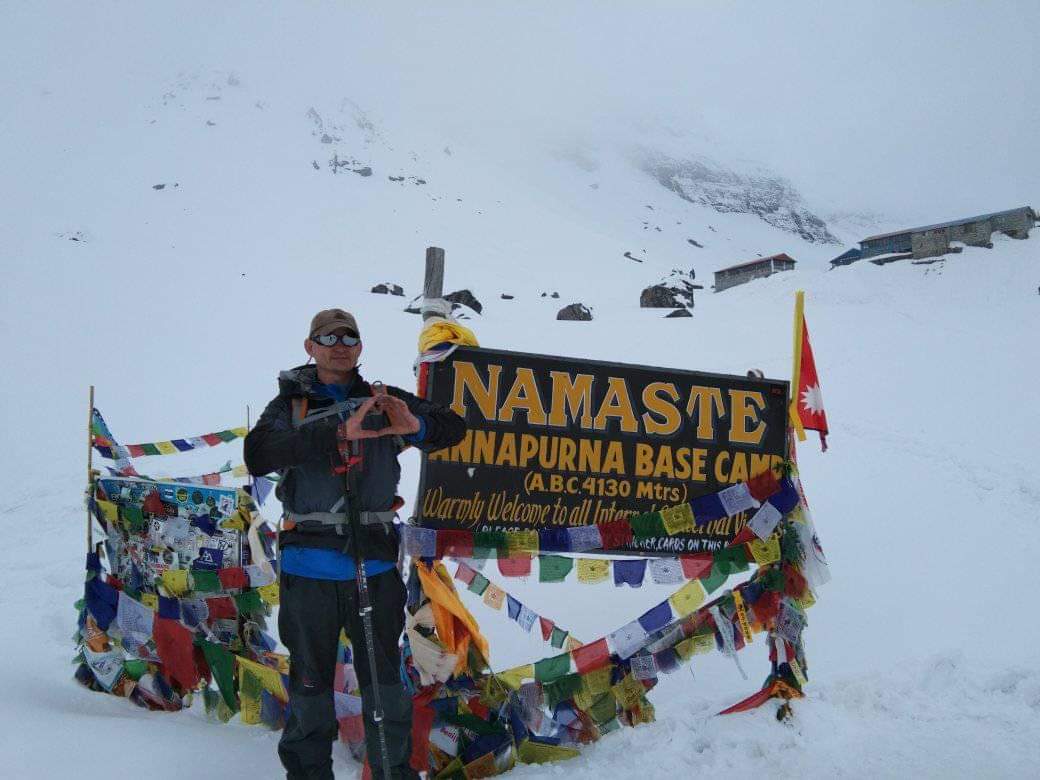
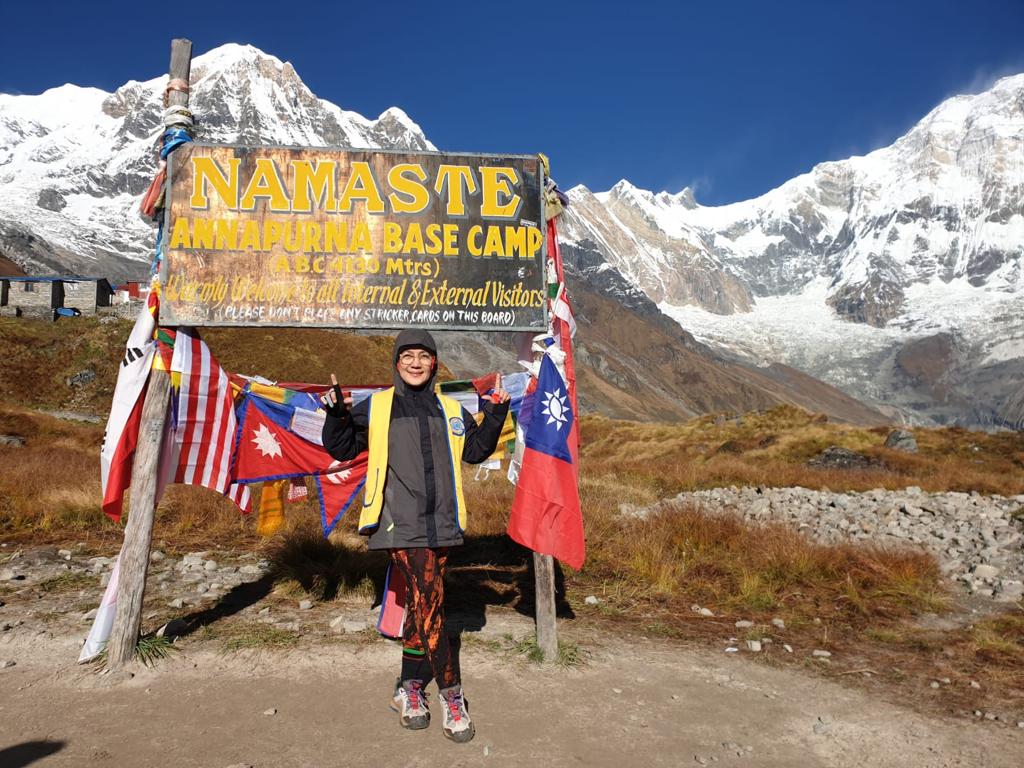




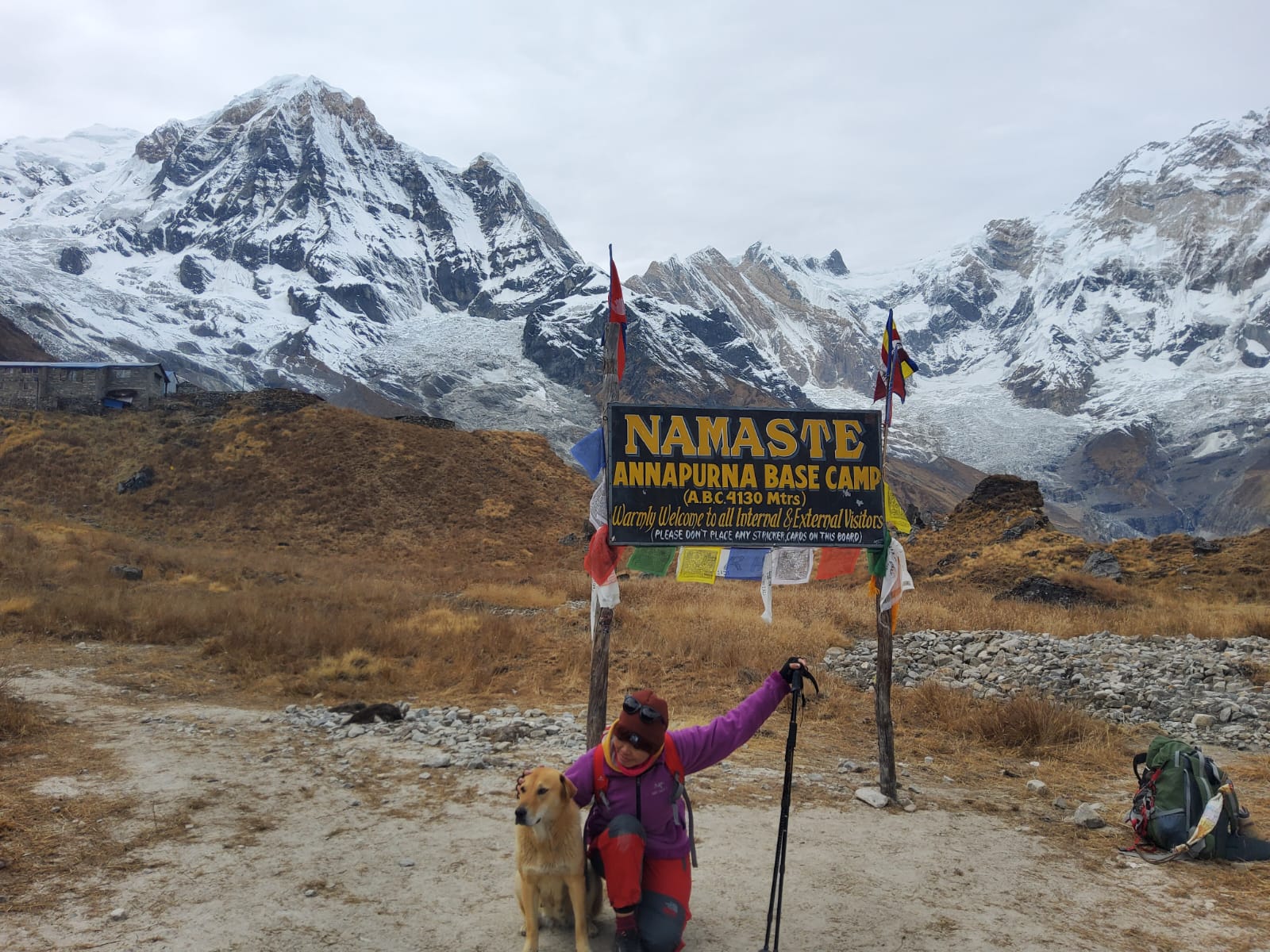

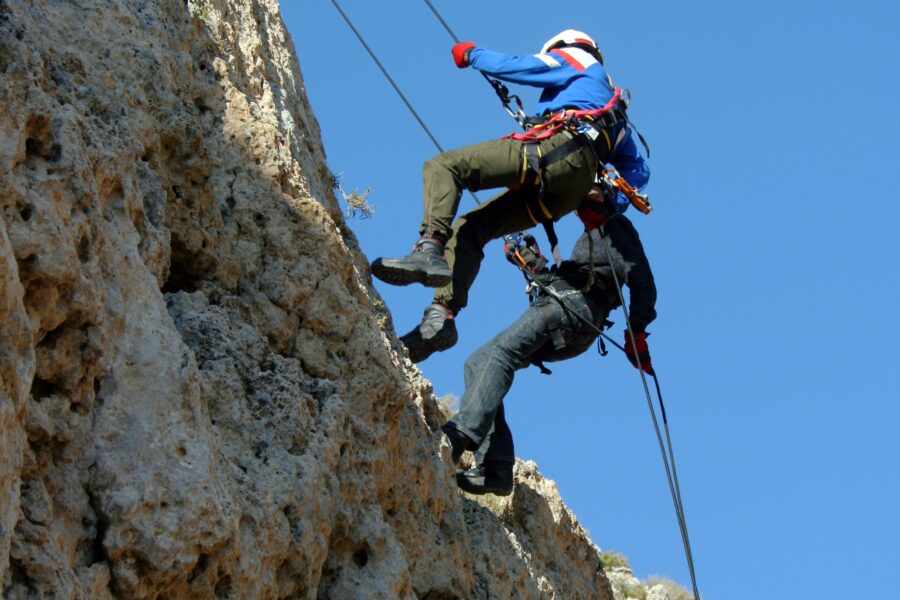
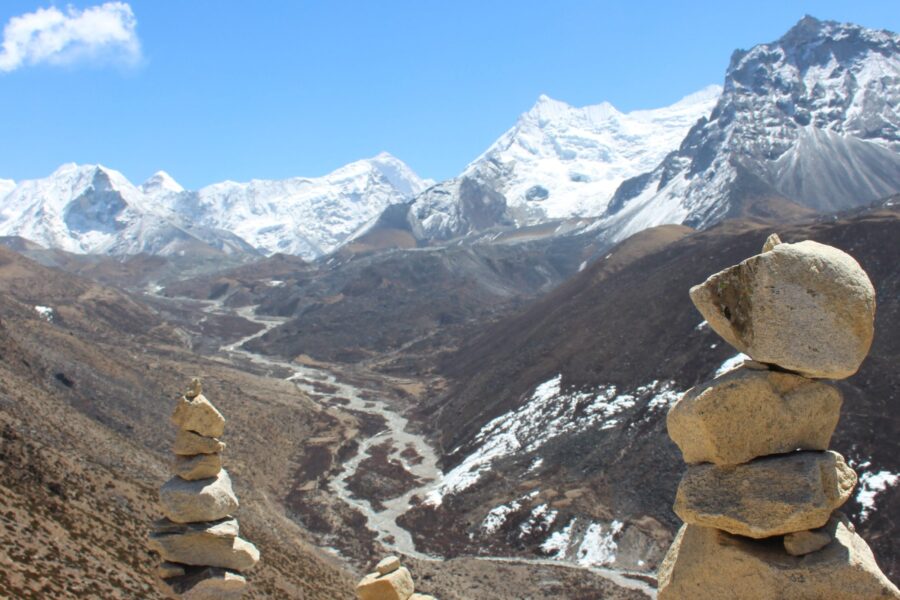
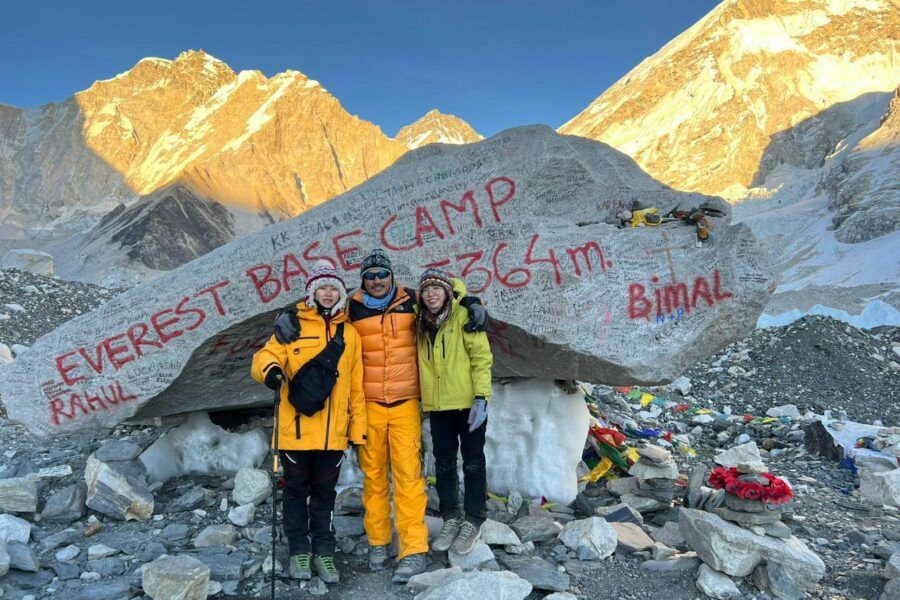

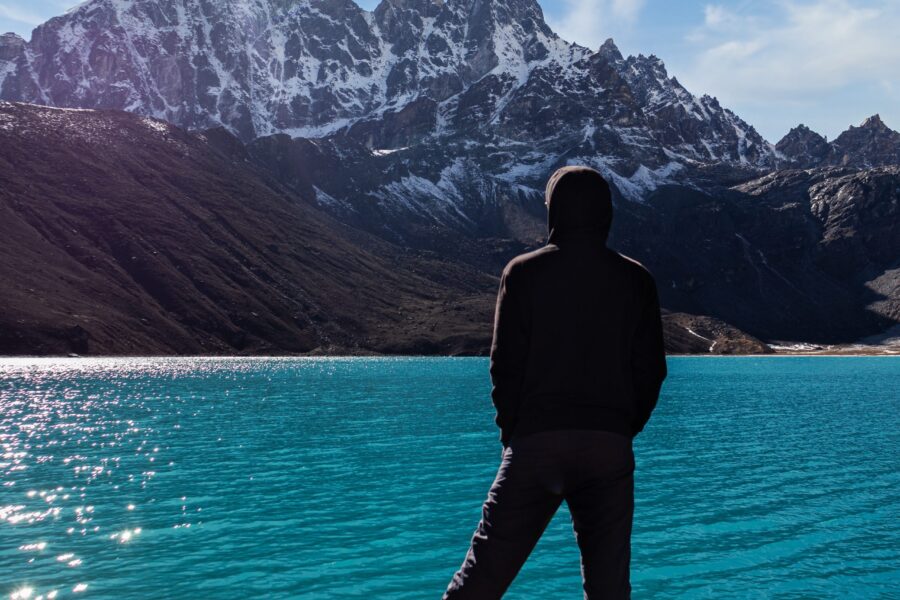
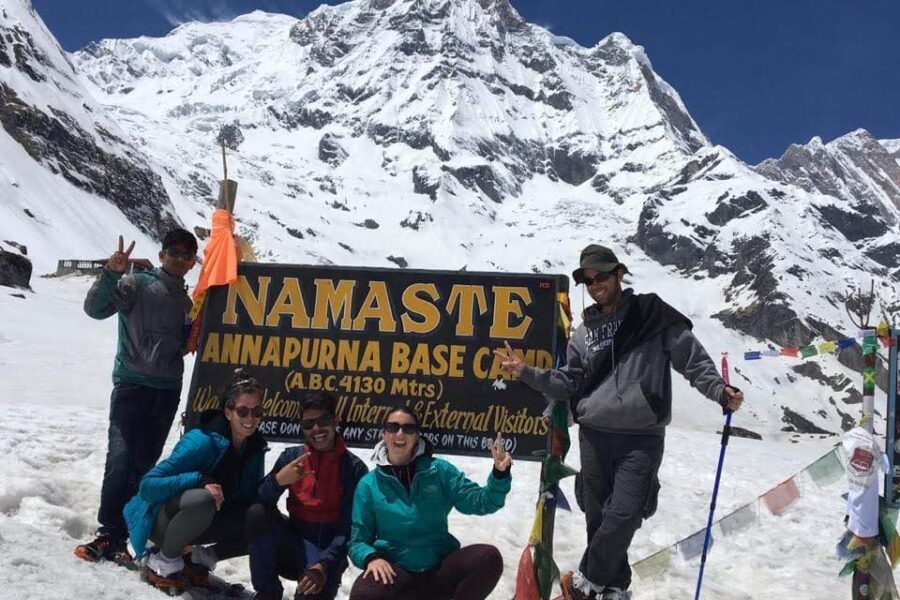
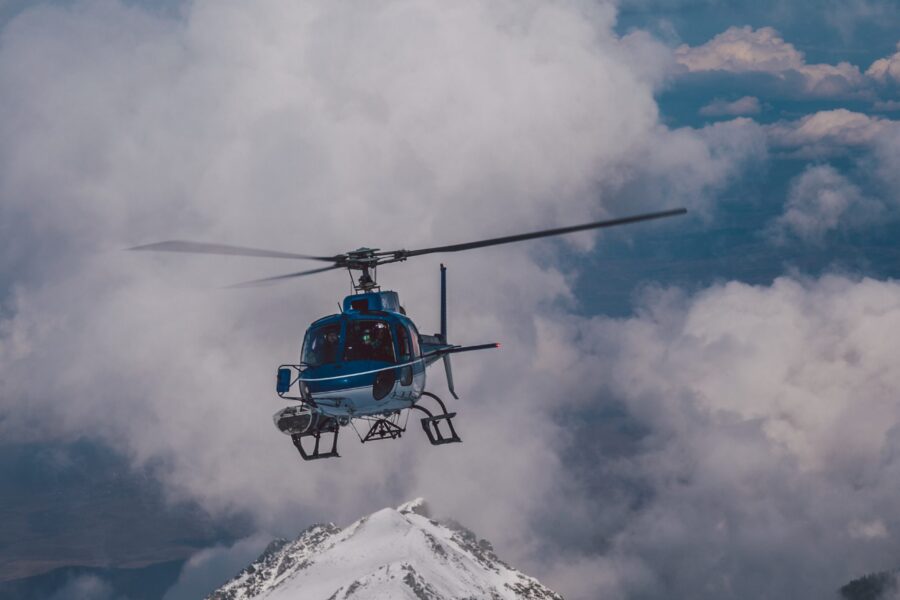
Excellent goods from you, man. I have understand your stuff previous to and you are just extremely fantastic. I actually like what you've acquired here, really like what you're stating and the way in which you say it. You make it enjoyable and you still care for to keep it wise. I can not wait to read far more from you. This is actually a tremendous site. https://medium.com/@amansingh58401/how-to-use-semrush-for-effective-keyword-research-b8f0a79d4322 https://medium.com/@amansingh58401/best-practices-for-seo-audits-with-semrush-71588be72b2a https://medium.com/@amansingh58401/how-semrush-can-improve-your-website-traffic-6312b4d679e2 https://medium.com/@amansingh58401/understanding-semrush-tools-for-competitor-analysis-e803417b125c https://medium.com/@amansingh58401/how-to-create-a-content-strategy-using-semrush-3e730707a7b9 https://medium.com/@amansingh58401/benefits-of-using-semrush-for-on-page-seo-8b83bb3af802 https://medium.com/@amansingh58401/how-to-analyze-backlinks-with-semrush-9570a98f351e https://medium.com/@amansingh58401/using-semrush-to-track-your-seo-performance-929581bd2855 https://medium.com/@amansingh58401/how-semrush-can-help-you-optimize-your-blog-f213eba946ea https://medium.com/@amansingh58401/importance-of-local-seo-and-how-semrush-can-assist-a1fec208929e https://medium.com/@amansingh58401/how-to-conduct-a-site-audit-using-semrush-2f04849fa9fc https://medium.com/@amansingh58401/how-semrush-enhances-your-link-building-strategies-f6fa5de0e252 https://medium.com/@amansingh58401/exploring-semrush-features-for-digital-marketing-908efbac359e https://medium.com/@amansingh58401/how-to-use-semrush-for-social-media-analysis-1e7e58b1e96d https://medium.com/@amansingh58401/how-semrush-helps-in-understanding-keyword-trends-1ef8bfd9bdad https://medium.com/@amansingh58401/the-role-of-semrush-in-improving-website-rankings-03fe420555c6 https://medium.com/@amansingh58401/how-to-leverage-semrush-for-content-optimization-cc88d58c8f09 https://medium.com/@amansingh58401/using-semrush-for-effective-ppc-campaigns-68b0af215dfc https://medium.com/@amansingh58401/how-to-monitor-brand-reputation-with-semrush-c9c7451a5f70 https://medium.com/@amansingh58401/steps-to-create-seo-friendly-content-with-semrush-edc4d504409b https://medium.com/@amansingh58401/understanding-technical-seo-with-semrush-tools-f9d202a56a57 https://medium.com/@amansingh58401/how-to-identify-content-gaps-using-semrush-df8b3764a274 https://medium.com/@amansingh58401/using-semrush-for-competitive-research-in-seo-68aa655451db https://medium.com/@amansingh58401/importance-of-meta-tags-and-how-semrush-can-help-cd3aaf49d3b9 https://medium.com/@amansingh58401/how-to-use-semrush-for-tracking-organic-keywords-b90483b10310 https://medium.com/@amansingh58401/best-ways-to-utilize-semrush-for-e-commerce-seo-f2773fc333a8 https://medium.com/@amansingh58401/how-semrush-can-aid-in-building-domain-authority-aab7ee411e65 https://medium.com/@amansingh58401/how-to-optimize-images-for-seo-with-semrush-b83a63579aee https://medium.com/@amansingh58401/strategies-for-writing-seo-content-with-semrush-b1dc4d72eee2 https://medium.com/@amansingh58401/how-semrush-supports-mobile-optimization-efforts-f8302c965c1f https://medium.com/@godaraanita44/31-benefits-of-using-semrush-for-affiliate-marketing-144967f8a490 https://medium.com/@godaraanita44/how-to-conduct-a-keyword-gap-analysis-with-semrush-a77175a592e1 https://medium.com/@godaraanita44/how-semrush-can-enhance-your-content-marketing-dc0d34f1a9a1 https://medium.com/@godaraanita44/understanding-the-importance-of-user-experience-with-semrush-d799e40dea7e https://medium.com/@godaraanita44/how-to-use-semrush-for-influencer-marketing-strategies-891c6e3413b5 https://medium.com/@godaraanita44/how-semrush-can-help-you-understand-serp-features-50b873a54429 https://medium.com/@godaraanita44/tips-for-creating-engaging-content-with-semrush-7f4236608c67 https://medium.com/@godaraanita44/how-to-use-semrush-for-monitoring-website-health-f55c0d8f082a https://medium.com/@godaraanita44/importance-of-backlink-analysis-and-how-semrush-helps-50df8d1d14b1 https://medium.com/@godaraanita44/how-to-improve-page-load-speed-using-semrush-43bfce227451 https://paste.md-5.net/miyatopibu.rb https://paste2.org/9cyLUsap https://paste.toolforge.org/view/6ccf8af4 https://justpaste.me/Bp4e https://paiza.io/projects/2C5Z4J-mcDBpcqsTJTW9iw https://pastelink.net/smc4eaiu https://paste.thezomg.com/241660/64939017/ https://paste.enginehub.org/iS64mrGCi https://tech.io/snippet/q66KZPO https://paste.feed-the-beast.com/view/f31007b5 https://forum.thecodingcolosseum.com/topic/18744/scd https://forum.daoyidh.com/topic/5772/sfca https://ideone.com/KpjIbL https://www.pastery.net/mhtzkp/ https://paste.laravel.io/b2e08bd5-ba33-43ad-8ff9-e425a185523c https://forum.instube.com/d/174764-dsfsd https://docs.google.com/document/d/e/2PACX-1vTD2Caj_taxmJ93bj3C53cM6AwemBrFcSbSihDNdfJ3wHXW6DtkDfDFzKsQBKGPDWldlyWS0LwpB_4p/pub https://yamcode.com/sfwfwa-130 https://controlc.com/ebfe541b https://p.ip.fi/F7TZ https://ctxt.io/2/AAB4JmQDEQ https://rentry.co/879xht6u https://runkit.com/zarina/fdggf https://www.diigo.com/item/note/b8pa1/my78?k=092f1ecef811444b6153bd9854866a7e https://wokwi.com/projects/414598349870500865 https://paste.rs/v7bRd.txt https://herbalmeds-forum.biolife.com.my/d/206133-ffdhd https://anotepad.com/notes/78ip9be4 https://paste.md-5.net/tewoxuyeza.sql https://paiza.io/projects/lbifg4eOovDrFpicHQsy-g https://justpaste.me/BpVS2 https://paste.toolforge.org/view/3f3d4552 https://paste2.org/KZ9EZH3O https://pastelink.net/nl883i3y https://paste.thezomg.com/241663/16510301/ https://paste.enginehub.org/nlXksk28d https://tech.io/snippet/W5S72mo https://paste.feed-the-beast.com/view/87df3839 https://forum.thecodingcolosseum.com/topic/18747/sfa https://forum.daoyidh.com/topic/5775/sfsv https://ideone.com/UBFEQf https://www.pastery.net/rancjr/ https://wokwi.com/projects/414599168600950785 https://paste.laravel.io/2e105730-cb07-4ee9-8042-5fc4ecd4a710 https://docs.google.com/document/d/e/2PACX-1vQCr0l41s3Y1KHkDPD1IuF14F_Ed0VoVHy9FQ_fRSQcVmYqvP1AHBXxBYHkBEaKb5s0hqa0TqIu7y2O/pub https://forum.instube.com/d/174782-sdgsfd https://yamcode.com/ddgsdg-426 https://herbalmeds-forum.biolife.com.my/d/206141-ffd https://controlc.com/b95024c9 https://p.ip.fi/Akkv https://paste.ee/p/crkto https://anotepad.com/notes/nfr6m2d3 https://ctxt.io/2/AAB4fmRgEw https://rentry.co/kpsdxyrm https://runkit.com/zarina/vcvxc https://paste.rs/PPb9V.txt https://www.diigo.com/item/note/b8pa1/0uyn?k=b14b4003eafaf556ba71425350a12ec2 https://paste.md-5.net/opoqonebap.cpp https://paste2.org/ejKmgfzf https://paste.toolforge.org/view/f273084d https://justpaste.me/BqRF2 https://paiza.io/projects/qnphZD8Q_oekN_6Tu-gVZQ https://pastelink.net/77jv21d7 https://paste.thezomg.com/241693/73165458/ https://paste.enginehub.org/savKLMzrR https://paste.laravel.io/f39dedd2-aa8e-49f8-bc31-d013846deb5d https://tech.io/snippet/wf8sbfc https://paste.feed-the-beast.com/view/e6670fa2 https://forum.thecodingcolosseum.com/topic/18751/sfcsf https://forum.daoyidh.com/topic/5780/sfs https://ideone.com/CHtonV https://www.pastery.net/qeywgd/ https://wokwi.com/projects/414602847755429889 https://forum.instube.com/d/174892-sdgef https://docs.google.com/document/d/e/2PACX-1vSk-LrN1mn6N3k6xXgzKfJNpE8dAuiTG7Kv8xFvOzb0PYhKongin7vbeziAmhQHGm7WOBMqdHZD6EuC/pub https://herbalmeds-forum.biolife.com.my/d/206258-ete https://controlc.com/9658617b https://p.ip.fi/JZjV https://paste.ee/p/j6TFx https://anotepad.com/notes/ca3aqctm https://ctxt.io/2/AAB4BqnVFg https://rentry.co/tqx36vtm https://runkit.com/zarina/sdfsa https://paste.rs/LJI13.txt https://www.diigo.com/item/note/b8pa1/ag20?k=f63f5cc82d1d6cf428e82f63db1c7aa7 https://paste.md-5.net/umifojepah.cpp https://paste2.org/36JMA1We https://paste.toolforge.org/view/2a992f5a https://justpaste.me/BqlN2 https://paiza.io/projects/9gENgx7MylktGJrOMLeHqg https://pastelink.net/kv6r6rpx https://paste.thezomg.com/241711/31655806/ https://paste.enginehub.org/aUkTqFG7t https://paste.laravel.io/6e550057-277d-4e36-b734-8626922e2f2a https://tech.io/snippet/PHbGPOn https://paste.feed-the-beast.com/view/23647544 https://forum.thecodingcolosseum.com/topic/18754/sfas https://forum.daoyidh.com/topic/5781/dfwd https://ideone.com/9vWO26 https://www.pastery.net/uxgbtd/ https://wokwi.com/projects/414604156021068801 https://forum.instube.com/d/174937-sfsf https://docs.google.com/document/d/e/2PACX-1vTORwLYpVLEaXLX6dU0IfpqJ-CM98bcZJqYWbMzMcUeNofvhlVWCAdA6VT2s2dFEXts_xpe6MPgVGnh/pub https://herbalmeds-forum.biolife.com.my/d/206294-dsfsd https://controlc.com/bda42593 https://p.ip.fi/vdV2 https://paste.ee/p/3JtPe https://anotepad.com/notes/daq7fh97 https://ctxt.io/2/AAB4nmasEA https://rentry.co/4dyvpukz https://runkit.com/zarina/scfasc https://paste.rs/XCaK3.txt https://www.diigo.com/item/note/b8pa1/0i56?k=2a44de4b856df241e829706588d1804f My page: <a>online business</a>